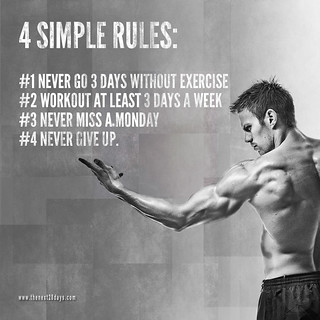How do Simple Rules help share or prompt knowledge in a complex world?
Another excellent blog post from the Farnham Street blog reviews Donald Sull and Kathleen Eisenhardt's book "Simple Rules: How to Thrive in a Complex World".
This book described the development of what we might call heuristics, or "rules of thumb" as simple ways to guide behaviour.
As they define them, simple rules refer to “a handful of guidelines tailored to the user and the task at hand, which balance concrete guidance with the freedom to exercise judgement.” These rules “provide a powerful weapon against the complexity that threatens to overwhelm individuals, organisations, and society as a whole. Complexity arises whenever a system— technical, social, or natural— has multiple interdependent parts.”
Here are the simple rules for using simple rules.
- Simple rules consist of a handful of guidelines applied to a speficic activity of decision
- Simple rules are tailored to the situations of specific people who will use them, rather than one-size-fits-all
- Simple rules are most effective when they apply to critical activities of decisions that represent bottlenecks to accomplishing an important goal
- Simple rules give concrete guidance without being overly prescriptive
Simple rules are used by experts all the time as a shorthand for knowledge, and in Knowledge Management terms, a community of practice can develop their own shared "simple rules" as a shared framework for sense making and decision making, and experts can identify and share the simple rules they use unconsciously, as a way of sharing knowledge with less experienced staff. As the billionaire Charlie Munger described -
If you’ve got a full list of tools [simple rules], and go through them in your mind, checklist-style, you will find a lot of answers that you won’t find any other way".
Some of these rules - the most robust ones - can be written down in the form of external checklists, and the checklists used by surgeons and pilots represent a set of shared rules, built up from years of safety analysis, which allow them to perform their jobs effectively and efficiently.
Other simple rules can be used as a framework for mentoring more junior staff, by providing them with a set of ways to think about a problem. Charlie Mungers mental checklist could be used as the basis for training or coaching aspiring business people, but will certainly need the presence of the trainer or coach for the knowledge to be effectively transferred.
Sometimes simpler is better.
Sometimes its best to develop and discuss in your communities of practice, until they are fully internalised, the simple rules that give concrete guidance, and then leave the details up to the individuals.
Here are some examples of simple rules from the book
Surgeon General WWII triage rules:
1. Sort into following categories
Stable vital signs: Green
Unlikely to survive even with heroic medical intervention: Black
Badly injured (a shot at survival, but only if they receive immediate attention: Red Others: Yellow
2. Give those with black tag palliative care
3. Treat the rest in the order Red, Yellow, Green
HF rules for investing in Yeltsin Russia:
1. Have revenues of $100 million to $500 million
2. Compete in an industry in which we have previously invested
3. Offer products the typical Russian family might purchase if they had an extra $100 to spend per month
4. Work only with executives who know criminals but are not criminals themselves
Loeb's stopping rule:
If an investment loses 10 percent of its initial value, sell it
Donald Sull's bouncer rules:
1. Don't let trouble in the door
2. Stay sober until the last patron leaves
3. Double up for heavy metal, ska and punk bands
4. Keep the bikers on your side
Lobby's sports commentary how-to rules
1. set the scene;
2. describe the action;
3. give the score or results, regularly and succinctly;
4. explain, without interrupting, the stadium's reaction to the game's event;
5. share "homework," such as historical facts and figures or personal information;
6. assess the significance of the occasion and key moments
US Forest Service how-to rules
1. start an escape fire in the path of the advancing fire if possible;
2. go to where the fuel is thinner;
3. turn toward the fire and try to work through it;
4. don't let the fire choose the spot where it hits you
Google hiring rules:
1. look for eccentricity;
2. look for strong referrals from other Google employees;
3. avoid anyone with even the smallest inaccuracy on their resume
Napoleon's "coordination" rule:
"march toward the sound of gunfire"





2 comments:
Great stuff- and what would you suggest as simple rules for Knowledge Management :-)
Off the top of my head .....
Never confuse Knowledge with Information
Prioritise Pull over Push
Give equal attention to Roles, Processes, Technology and Governance
Think Framework, not Toolbox
Satisfy the two stakeholder groups - the knowledge workers and the senior managers
In all things, be led by the needs and strategy of the business (/organisation)
Post a Comment